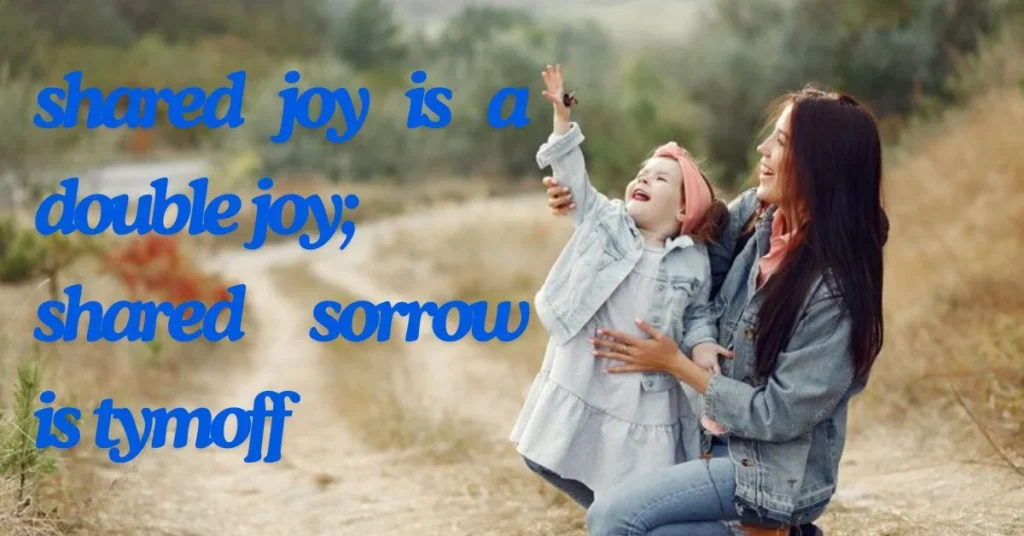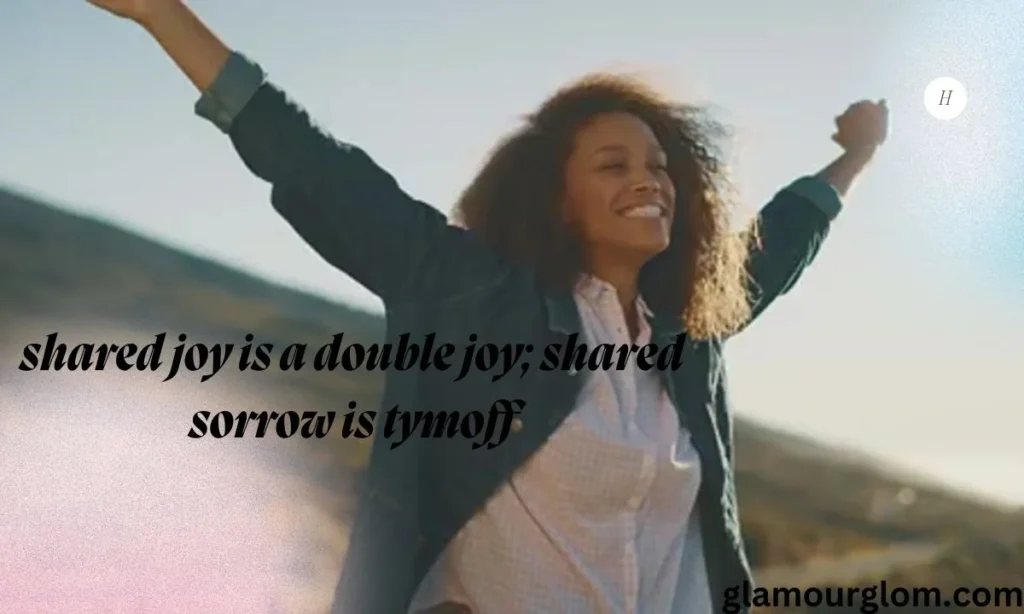Introduction to Shared Emotions
Ever experienced the rush of happiness that comes from celebrating a joyous moment with friends or the comfort in knowing you’re not alone when facing tough times? Shared emotions have a unique power to connect us on a deeper level, transcending individual experiences and fostering bonds that can withstand any challenge. In this blog post, we delve into the captivating world of shared joy and shared sorrow – exploring their significance, benefits, and how they shape our relationships and society as a whole. So grab a cup of tea, settle in, and let’s embark on this emotional journey together!
What is
Shared emotions are the invisible threads that connect us as human beings. They transcend language and culture, allowing us to shared joy is a double joy; shared sorrow is tymoff on a deeper level. But what exactly is shared joy and shared sorrow?
Shared joy refers to the feeling of happiness or delight that is experienced collectively among a group of individuals. It’s the uplifting sensation that comes from celebrating achievements, milestones, or moments of pure bliss together. When we share joy with others, it not only amplifies our own sense of happiness but also strengthens our bonds with those around us.
On the other hand, shared sorrow encompasses feelings of grief, sadness, or disappointment that are felt communally. It’s the weight we carry together during times of loss, tragedy, or hardship. While experiencing shared sorrow can be challenging, sharing these emotions can provide comfort and support as we navigate through difficult circumstances side by side.
Whether it’s rejoicing in triumphs or finding solace in times of despair, understanding the power of shared emotions can help us foster deeper connections and build a more compassionate society.
The Benefits of Experiencing Shared Job
Experiencing shared joy can create a ripple effect of positivity that spreads like wildfire. When we share moments of happiness with others, it not only amplifies our own feelings but also strengthens the bonds between us. Sharing joy fosters a sense of connection and camaraderie that enriches our relationships.
This collective joy can boost morale, enhance shared joy is a double joy; shared sorrow is tymoff, and increase productivity in various settings, whether it’s at work or in social circles. Celebrating successes together cultivates a supportive environment where everyone feels valued and appreciated. The shared experience of joy uplifts spirits and creates lasting memories that bind people together.
Moreover, sharing joy allows us to celebrate each other’s achievements genuinely and authentically. It encourages empathy, compassion, and understanding among individuals as they come together to revel in each other’s triumphs. Embracing shared joy not only brings lightness to our hearts but also reinforces the idea that happiness is best when shared with others around us.
Coping with Negative Shared Emotions

When it comes to coping with negative shared emotions, it’s important to remember that you’re not alone in your feelings. Sharing sorrow with others can provide a sense of comfort and solidarity, knowing that others understand what you’re going through.
One way to cope with negative shared emotions is by allowing yourself to feel them fully. Suppressing or denying these emotions can often lead to more distress in the long run. It’s okay to grieve, be sad, or feel upset – these are natural responses to difficult situations.
Seeking support from friends, family, or a therapist can also help navigate through negative shared emotions. Talking about your feelings and experiences can offer different perspectives and insights that might ease the burden on your shoulders.
Engaging in self-care activities like exercise, meditation, or hobbies can provide a much-needed distraction and boost your mood during challenging times. Remember that it’s okay not to be okay sometimes; allow yourself space for healing and growth amidst shared sorrow.
Cultivating a Culture of Shared Emotions in Society
In a world where individualism often reigns supreme, cultivating a culture of shared emotions in society is like planting seeds of empathy and connection. It’s about creating spaces where people feel safe to express their joys and sorrows openly, knowing they will be met with understanding and support.
By fostering an environment that encourages the sharing of emotions, we can break down barriers that separate us and build bridges that unite us. Whether it’s celebrating achievements together or leaning on each other during tough times, shared emotions have the power to strengthen relationships and foster a sense of community.
When we embrace the concept that shared joy is a double joy and shared sorrow is half sorrow, we acknowledge the profound impact our emotional experiences can have on others. This awareness can lead to increased compassion, kindness, and ultimately create a more empathetic society where individuals feel seen, heard, and valued.
Conclusion
As we wrap up our exploration of shared emotions, it becomes clear that the power of connecting with others on a deep emotional level is truly transformative. Whether it’s sharing joy in moments of celebration or coming together in times of sorrow, these experiences have the ability to strengthen bonds and create lasting connections.
By acknowledging and embracing both the positive and negative aspects of shared emotions, we can learn to navigate life’s ups and downs with greater resilience and empathy. Cultivating a culture where individuals feel safe to express their feelings openly paves the way for more meaningful interactions and relationships.
In a world filled with uncertainty and challenges, finding solace in shared emotions reminds us that we are not alone in our experiences. As we continue to prioritize compassion, understanding, and vulnerability in our interactions with others, we contribute to building a more connected and empathetic society.
FAQs
If you have any questions or concerns about the power of shared emotions, here are some frequently asked questions that might help clarify things for you:
1. How can I encourage shared joy in my community?
2. What are some ways to support someone experiencing shared sorrow?
3. Can sharing emotions strengthen relationships?
4. Is it normal to feel overwhelmed by negative shared emotions?
By understanding and embracing the concept of “shared joy is a double joy; shared sorrow is tymoff,” we can create a more empathetic and supportive society where individuals come together to celebrate the highs and navigate through the lows as one cohesive unit.
Thank you for joining us on this exploration of how our emotions connect us and shape our collective experiences.






